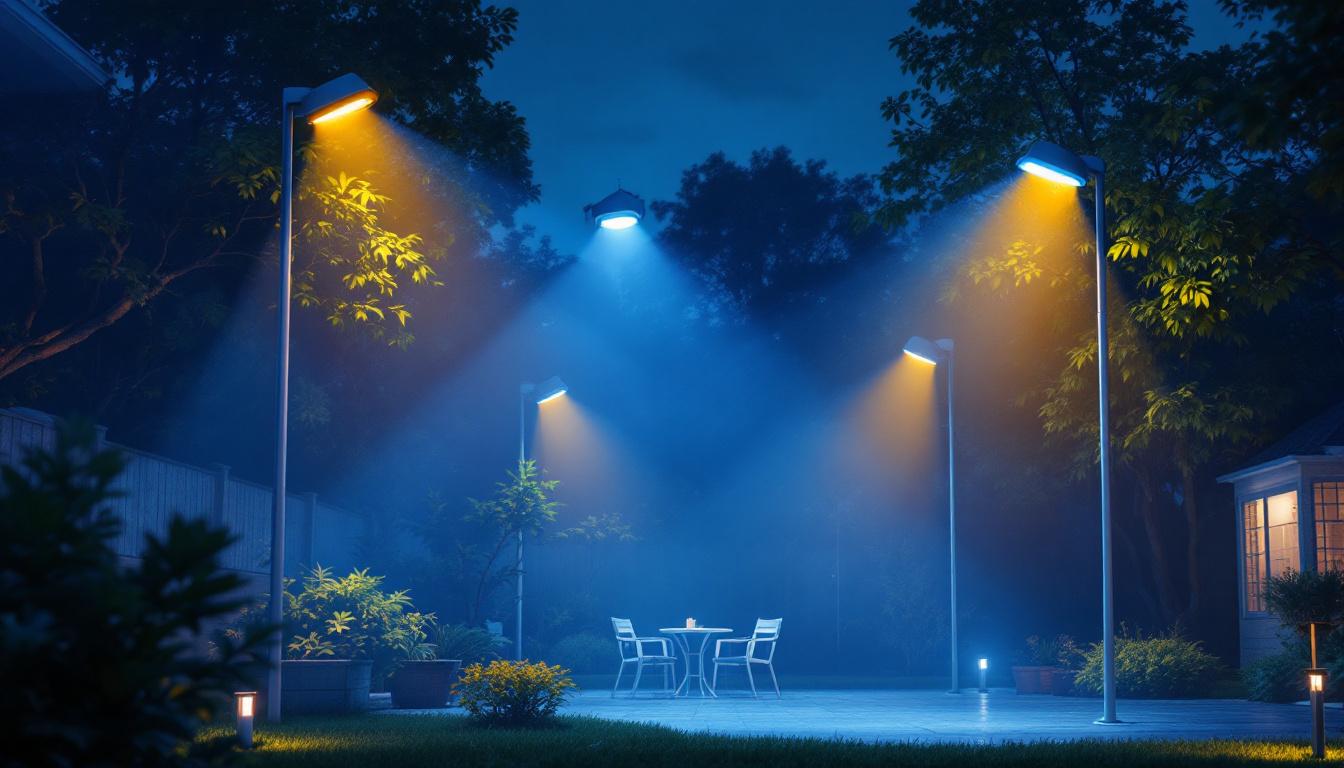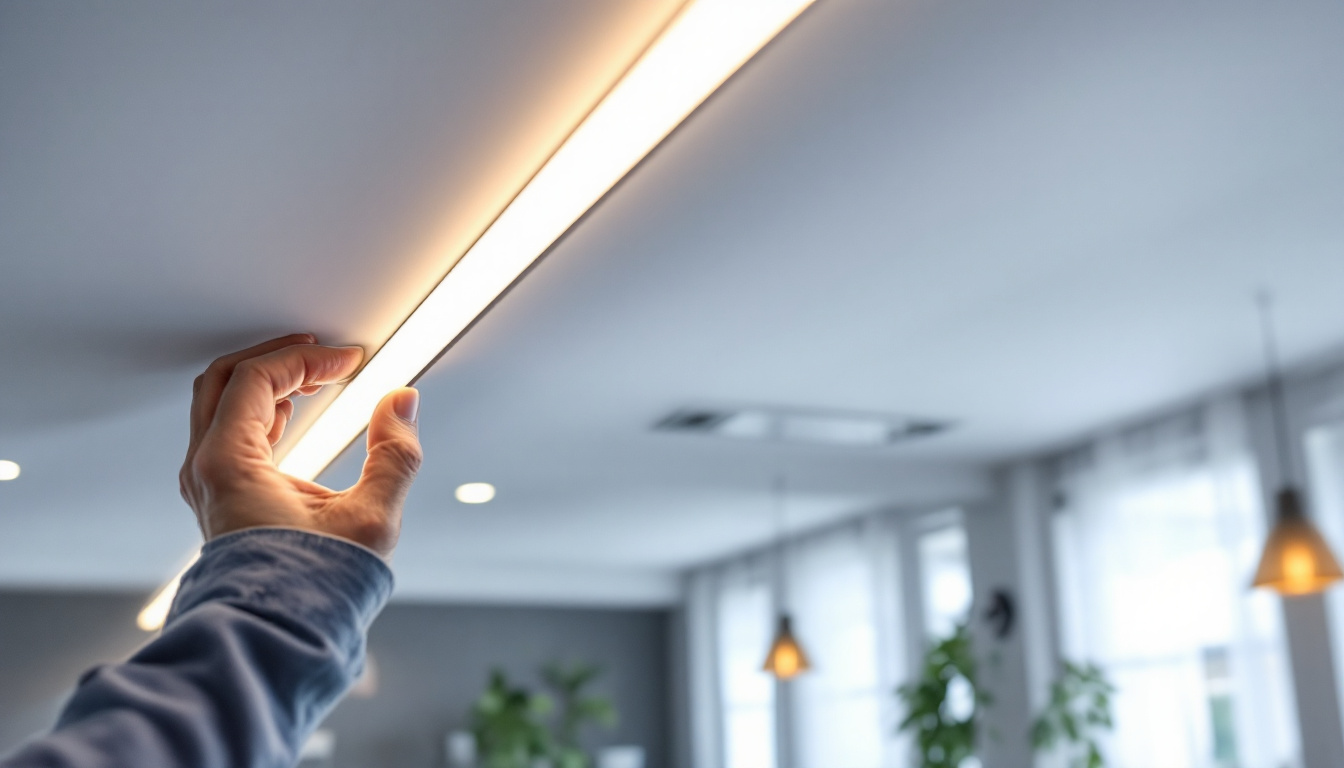
In the realm of outdoor security, lighting plays a pivotal role in enhancing safety and deterring potential intruders. As lighting contractors, understanding the best practices for selecting and installing security lights is essential for delivering optimal results to clients. This article delves into the various types of security lights, installation techniques, and innovative technologies that can elevate outdoor security lighting projects.
Security lights come in various forms, each designed to serve specific purposes. Familiarity with these types allows lighting contractors to make informed recommendations based on client needs.
Flood lights are powerful, wide-beam lights that illuminate large areas. They are ideal for driveways, parking lots, and backyards. These lights can be mounted on walls or poles and are often equipped with motion sensors to conserve energy and enhance security. When selecting flood lights, consider the lumen output, beam angle, and durability against weather elements. Additionally, many modern flood lights come with adjustable brightness settings and color temperature options, allowing homeowners to customize their lighting according to their preferences and the specific ambiance they wish to create. This versatility makes flood lights not only functional but also an aesthetic enhancement to outdoor spaces.
Motion sensor lights are designed to activate when they detect movement within a specified range. These lights not only provide illumination but also serve as a deterrent to potential intruders. They can be used in conjunction with flood lights or as standalone fixtures. It is crucial to position motion sensors correctly to avoid false triggers from passing animals or swaying branches. Furthermore, some advanced models offer adjustable sensitivity settings and time delay features, allowing users to fine-tune their operation based on the specific environment. This adaptability ensures that the lights provide security without being overly sensitive, thus reducing unnecessary energy consumption and wear.
Solar security lights harness the power of the sun, making them an eco-friendly option for outdoor lighting. They are easy to install and require minimal maintenance. However, contractors should assess the location for adequate sunlight exposure to ensure optimal performance. Solar lights often come with built-in motion sensors, adding an extra layer of security. In addition to their environmental benefits, solar security lights can also be equipped with features such as adjustable solar panels, allowing users to optimize their angle for maximum sunlight capture. Many models now include LED technology, which not only extends the lifespan of the lights but also enhances brightness and energy efficiency. As technology advances, some solar security lights even offer smart connectivity, enabling users to control and monitor their lighting remotely via smartphone applications, further integrating security with modern technology.
Proper installation is critical to maximizing the effectiveness of security lights. Lighting contractors must consider several factors to ensure that the lights serve their intended purpose.
Strategic placement of security lights is vital for comprehensive coverage. Lights should be positioned to cover entry points such as doors, windows, and garages. Additionally, illuminating pathways and driveways enhances visibility and safety. A well-lit perimeter can significantly deter criminal activity.
Contractors should also consider the height at which lights are mounted. Generally, mounting lights at a height of 8 to 10 feet provides optimal coverage while minimizing the risk of vandalism. It is essential to avoid placing lights too high, as this can create dark spots and reduce the effectiveness of the lighting. Furthermore, the angle of the lights should be adjusted to avoid glare, which can hinder visibility for both residents and potential intruders. Utilizing adjustable fixtures can help achieve the perfect angle for maximum illumination without causing discomfort to passersby.
When installing wired security lights, proper wiring and power supply are crucial. Contractors should ensure that all electrical connections are secure and meet local codes. Using weatherproof fixtures and wiring is essential to prevent damage from the elements.
For solar lights, it is important to verify that the solar panels are unobstructed and receive direct sunlight for a significant portion of the day. Regular maintenance, such as cleaning the panels, can enhance performance and longevity. Additionally, contractors may want to consider the battery capacity of solar lights, as this can affect how long the lights will operate during the night. Choosing models with larger batteries can ensure that the lights remain functional even on cloudy days or during the winter months when sunlight is limited.
In today’s digital age, integrating security lights with smart technology can provide clients with enhanced control and monitoring capabilities. Smart security lights can be connected to home automation systems, allowing users to control lighting remotely via smartphones or tablets.
Additionally, features such as scheduling, dimming, and alerts can be programmed to enhance security. Clients can be informed of any unusual activity through notifications, making it easier to respond to potential threats promptly. Moreover, many smart security lights can be integrated with motion sensors, which can trigger the lights to turn on automatically when movement is detected. This not only conserves energy but also serves as an effective deterrent against intruders, as sudden illumination can startle and discourage unwanted visitors. The ability to customize settings and receive real-time updates provides homeowners with peace of mind, knowing they can monitor their property from anywhere at any time.
The selection of lighting fixtures plays a significant role in the overall effectiveness and aesthetic appeal of outdoor security lighting. Contractors must consider various factors to ensure that the chosen fixtures meet both functional and aesthetic criteria.
Outdoor security lights are exposed to various weather conditions, making durability a key consideration. Contractors should select fixtures made from materials that can withstand harsh elements, such as corrosion-resistant metals or high-quality plastics. Look for fixtures with an IP (Ingress Protection) rating that indicates their resistance to dust and water.
In addition to material selection, the design of the fixtures can also enhance their durability. For instance, fixtures with sealed enclosures can prevent moisture ingress, while those designed with impact-resistant glass can withstand accidental bumps and falls. This attention to detail not only prolongs the lifespan of the lighting but also ensures that they continue to function effectively in the face of environmental challenges.
Energy-efficient lighting options, such as LED fixtures, are highly recommended for outdoor security lighting. LEDs consume less energy and have a longer lifespan compared to traditional incandescent bulbs. This not only reduces energy costs for clients but also minimizes the frequency of replacements, making them a cost-effective choice in the long run.
Moreover, energy-efficient lighting options often produce less heat, reducing the risk of overheating and extending the life of the fixtures. Additionally, the use of smart lighting technology can further enhance energy efficiency. Features such as motion sensors and timers allow lights to operate only when necessary, significantly lowering energy consumption and providing added convenience for homeowners.
While functionality is paramount, the design and aesthetics of security lights should not be overlooked. Clients may prefer fixtures that complement the architectural style of their homes. Offering a range of styles and finishes can help contractors meet diverse client preferences.
Consideration of color temperature is also important. Warmer color temperatures (2700K to 3000K) create a welcoming ambiance, while cooler temperatures (4000K to 5000K) provide a more clinical, alert environment. The choice of color temperature can influence the overall perception of safety and security. Furthermore, integrating smart lighting solutions that allow for color changing can provide homeowners with the flexibility to adjust the ambiance according to different occasions, enhancing both security and enjoyment of outdoor spaces.
Regular maintenance of outdoor security lights is essential for ensuring their longevity and effectiveness. Lighting contractors can provide valuable guidance to clients on how to maintain their security lighting systems.
Encouraging clients to conduct regular inspections of their security lights can help identify any issues early on. This includes checking for burnt-out bulbs, damaged fixtures, or obstructed solar panels. Promptly addressing these issues can prevent larger problems down the line.
During inspections, it is also advisable to test motion sensors and ensure they are functioning correctly. Adjustments may be necessary to optimize their sensitivity and coverage area.
Cleaning security lights, especially solar panels, is crucial for maintaining their efficiency. Dust, dirt, and debris can accumulate over time and hinder performance. Contractors should recommend a cleaning schedule to clients, emphasizing the importance of using non-abrasive materials to avoid damaging the fixtures.
For wired lights, checking the wiring for signs of wear or damage should be part of the maintenance routine. Ensuring that all electrical connections are secure can prevent potential hazards and ensure consistent performance.
As technology continues to evolve, encouraging clients to upgrade their security lighting systems can enhance performance and security. Newer models may offer improved energy efficiency, better motion detection capabilities, and integration with smart home systems.
Contractors can provide insights into the latest advancements in outdoor security lighting, helping clients make informed decisions about potential upgrades. This proactive approach not only enhances security but also fosters long-term client relationships.
In summary, outdoor security lighting is a critical component of home and property safety. Lighting contractors play a vital role in guiding clients through the selection, installation, and maintenance of security lights. By understanding the various types of security lights, installation best practices, and the importance of regular maintenance, contractors can ensure that their clients receive the best possible solutions for their security needs.
Ultimately, the right choice of security lights, combined with expert installation and ongoing maintenance, can significantly enhance the safety and security of outdoor spaces. By staying informed about the latest technologies and trends in outdoor lighting, contractors can continue to provide valuable services that meet the evolving needs of their clients.
Ready to elevate your outdoor security lighting projects with the best in class solutions? At LumenWholesale, we provide lighting contractors with the highest quality, spec-grade lighting products at prices that can’t be beaten. Say goodbye to local distributor markups and hello to our extensive selection that meets rigorous industry standards. With free shipping on bulk orders, you can trust that you’re getting premium lighting at the best value — no hidden fees, no compromises. Enhance the safety and aesthetics of any outdoor space with the reliability and performance of LumenWholesale. Explore our wholesale lighting options now and discover the perfect blend of quality, affordability, and convenience.

Discover the crucial insights lighting contractors need to know about industrial large fans.

Discover how the innovative Ceiling Bulb is revolutionizing the lighting industry for contractors.

Discover the key differences between 4K and 3500 lights in this comprehensive guide, and learn how to choose the perfect lighting solution for your next project.

Discover the transformative potential of LED strip lights for ceiling applications with our comprehensive guide tailored for lighting contractors.